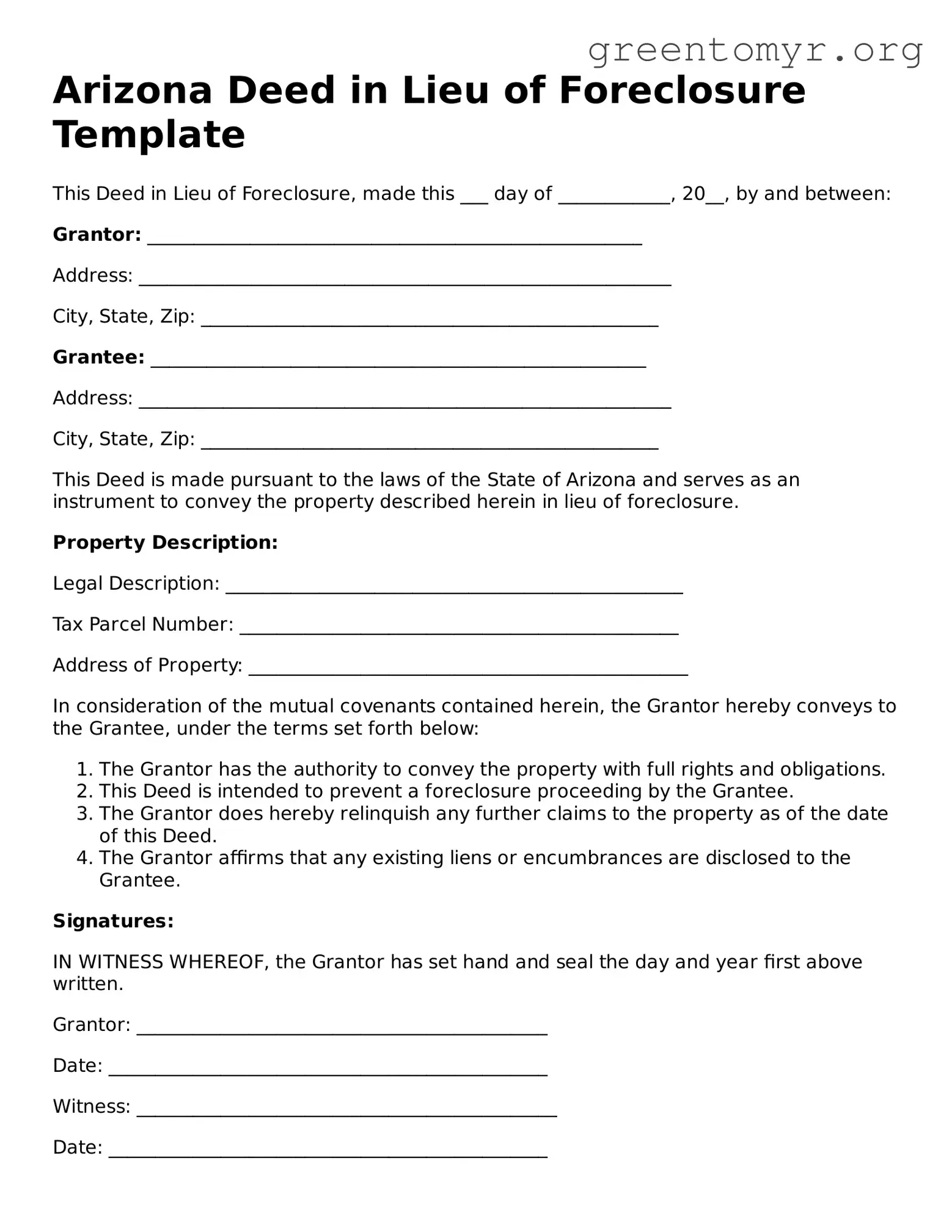Arizona Deed in Lieu of Foreclosure Template
This Deed in Lieu of Foreclosure, made this ___ day of ____________, 20__, by and between:
Grantor: _____________________________________________________
Address: _________________________________________________________
City, State, Zip: _________________________________________________
Grantee: _____________________________________________________
Address: _________________________________________________________
City, State, Zip: _________________________________________________
This Deed is made pursuant to the laws of the State of Arizona and serves as an instrument to convey the property described herein in lieu of foreclosure.
Property Description:
Legal Description: _________________________________________________
Tax Parcel Number: _______________________________________________
Address of Property: _______________________________________________
In consideration of the mutual covenants contained herein, the Grantor hereby conveys to the Grantee, under the terms set forth below:
- The Grantor has the authority to convey the property with full rights and obligations.
- This Deed is intended to prevent a foreclosure proceeding by the Grantee.
- The Grantor does hereby relinquish any further claims to the property as of the date of this Deed.
- The Grantor affirms that any existing liens or encumbrances are disclosed to the Grantee.
Signatures:
IN WITNESS WHEREOF, the Grantor has set hand and seal the day and year first above written.
Grantor: ____________________________________________
Date: _______________________________________________
Witness: _____________________________________________
Date: _______________________________________________
Notarization:
State of Arizona
County of __________________
On this ____ day of ____________, 20__, before me, a Notary Public, personally appeared ____________________________________________________, known to me to be the person(s) whose name(s) is (are) subscribed to the foregoing instrument and acknowledged that (he/she/they) executed the same for the purposes therein contained.
WITNESS my hand and official seal.
____________________________________
Notary Public
My Commission Expires: ___________________
